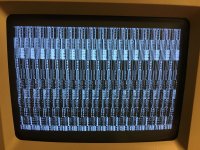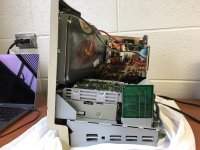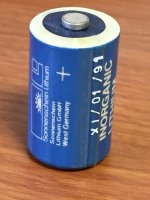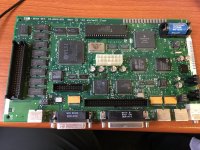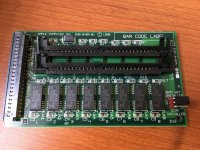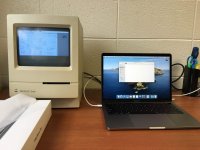Garrett
Well-known member
After about 6-7 years of wanting a vintage Mac, I finally acquired one. It's a 1991 Macintosh Classic. It works, but obviously needs some work as these untouched vintage Macs need. Also, I don't have an ADB keyboard or mouse, so I haven't been able to go through the system and find out more about it.
My first step of business is to open it up to remove the PRAM battery and get it recapped. Someone on the Macintosh Enthusiast Facebook group told me he could recap the board for a pretty fair price, and I'm definitely going to take him up on that offer. However, I'm having issues just getting the thing open.
First, I'm trying to find the correct Torx bit to remove the screws, specifically the screws up in the handle. Tonight I purchased a T15 bit and an extender from my local Lowes, but the extender has a piece (where the bit fits into it) that keeps it from fitting into the screw holes inside the handle. Other than that, I was able to get the two screws near the ports out just fine.
Second, what is the best way to separate the two halves of the cast? I've heard some people say its okay to use a flat head screwdriver as long as you wrap it in electrical tape or put a piece of cloth around it to prevent it from marring the plastic. Then I've heard others say that's a huge no-no and is just as bad as using the bare screwdriver. The person offering to recap the logic board recommended using something like a putty knife. What is the best thing I can use to open the machine up without damaging the case, preferably something readily available and cheap.
And lastly, when you get the case open, what precautions do I need to take when removing the logic board? Obviously I know to steer clear from the CRT and analog components. Also, when shipping the logic board to get recapped, what precautions should I take when shipping the board?
Any help would be greatly appreciated. It's nice to finally have one of these machines and I've learned a lot from various YouTube videos and articles over the year, but obviously actually doing it is another thing.
Here's a picture of the Mac:

P.S. This is my first post on this forum since I was last active around 2015 or so...
My first step of business is to open it up to remove the PRAM battery and get it recapped. Someone on the Macintosh Enthusiast Facebook group told me he could recap the board for a pretty fair price, and I'm definitely going to take him up on that offer. However, I'm having issues just getting the thing open.
First, I'm trying to find the correct Torx bit to remove the screws, specifically the screws up in the handle. Tonight I purchased a T15 bit and an extender from my local Lowes, but the extender has a piece (where the bit fits into it) that keeps it from fitting into the screw holes inside the handle. Other than that, I was able to get the two screws near the ports out just fine.
Second, what is the best way to separate the two halves of the cast? I've heard some people say its okay to use a flat head screwdriver as long as you wrap it in electrical tape or put a piece of cloth around it to prevent it from marring the plastic. Then I've heard others say that's a huge no-no and is just as bad as using the bare screwdriver. The person offering to recap the logic board recommended using something like a putty knife. What is the best thing I can use to open the machine up without damaging the case, preferably something readily available and cheap.
And lastly, when you get the case open, what precautions do I need to take when removing the logic board? Obviously I know to steer clear from the CRT and analog components. Also, when shipping the logic board to get recapped, what precautions should I take when shipping the board?
Any help would be greatly appreciated. It's nice to finally have one of these machines and I've learned a lot from various YouTube videos and articles over the year, but obviously actually doing it is another thing.
Here's a picture of the Mac:

P.S. This is my first post on this forum since I was last active around 2015 or so...
Last edited by a moderator:

